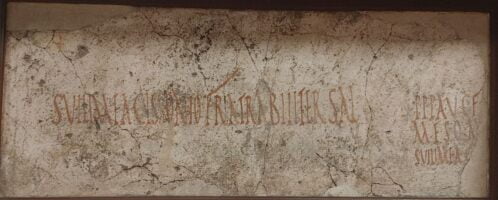Roman fresco showing old Silenus and Maenad
Roman fresco showing old Silenus and Maenad, who offers him a silver cup with wine. They were both companions of Bacchus, the god of wine. Object dated to the 1st century CE; it was discovered in Pompeii. The artifact is in the National Archaeological Museum in Naples.











